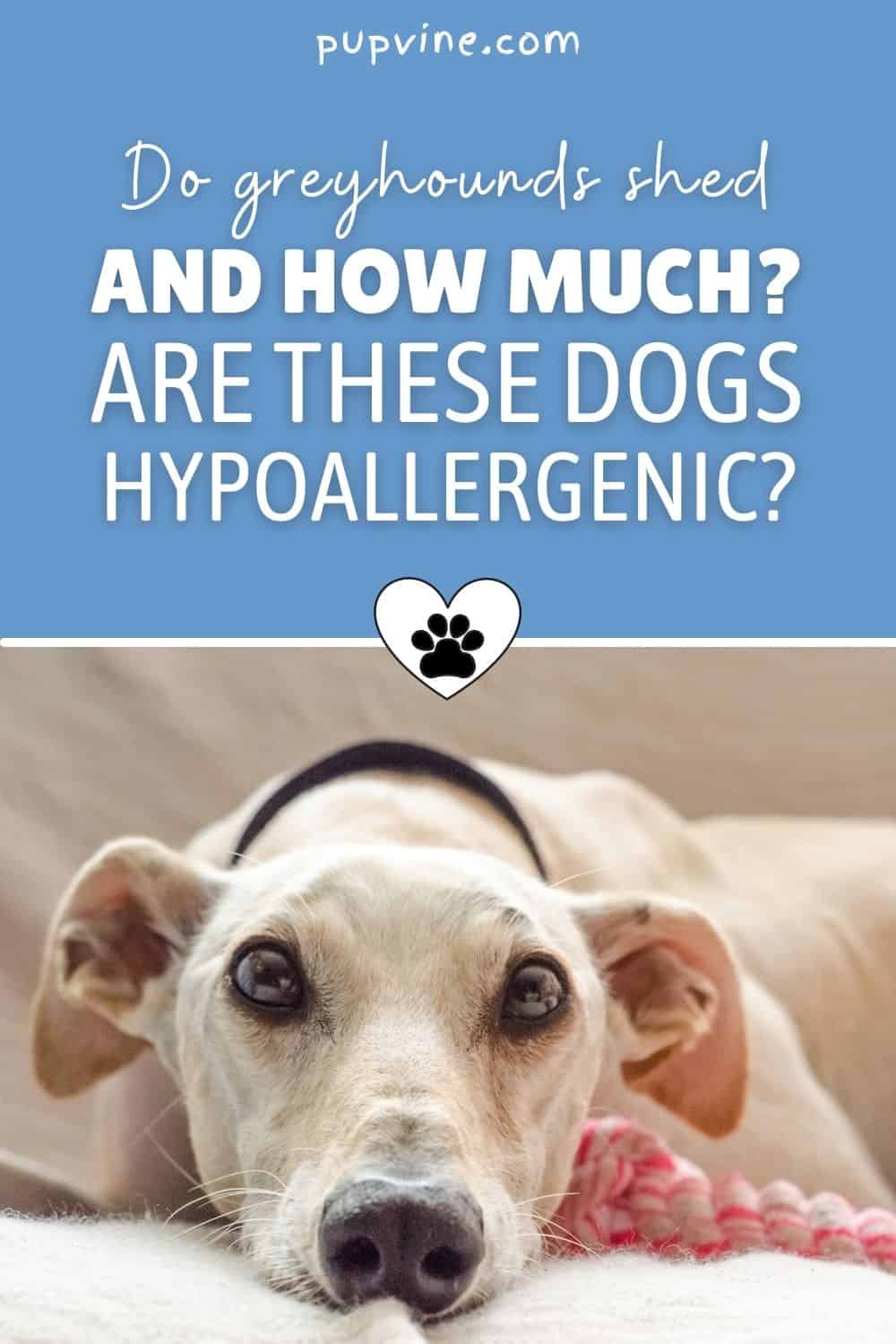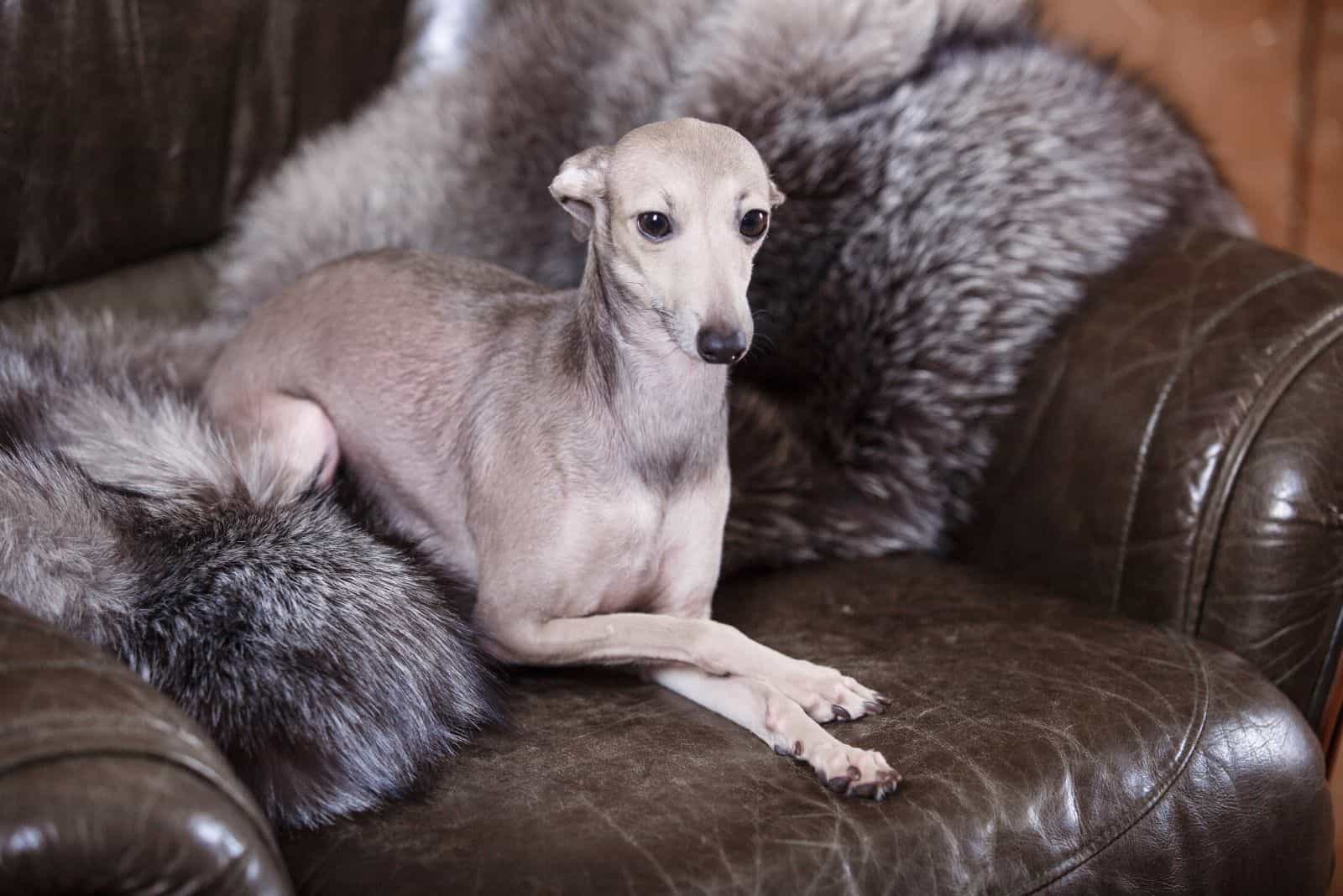One of the most unique dog breeds in the world is the Greyhound.
Yes… those racing dogs with a pretty bad reputation. Sadly, this reputation comes because some people decided watching them race is entertaining.
I’m completely against this, and prefer seeing a Greyhound living cozily in a house.
Greyhounds are lovely dogs to share a home with. They’re kind-tempered, friendly, smart, and caring. And, they don’t need much exercise!
But, do Greyhounds shed? Do they tick off this box, too?
Yes, Greyhounds shed. However, this shouldn’t discourage you from getting a Greyhound puppy or adopting a retired racing Greyhound. Their amount of shed hair isn’t something you should be worried about.
Here, let me explain to you how much Greyhounds shed and what to do about it.
Introducing The Greyhound Breed Of Dogs
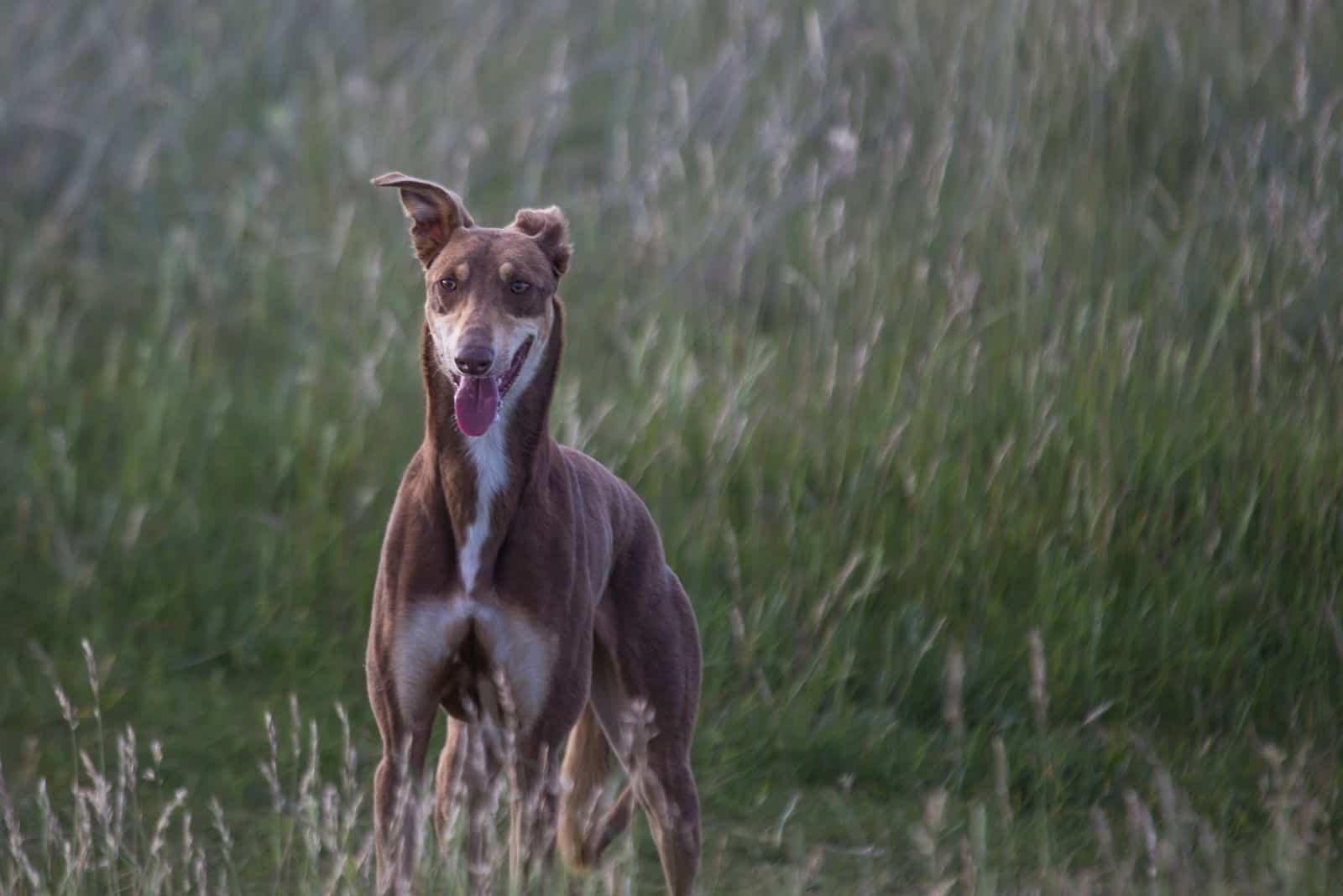
Here, we have a sighthound with a long history. Greyhounds are an ancient dog breed, dating back to ancient Egypt. Over the years, they were very much appreciated for their hunting abilities.
Greyhounds used to be bred to chase small animals, as their prey drive is very high. And, let me tell you something; this prey drive has clung to them ever since. That’s why you need to control your Greyhound dog around little animals.
But, it’s not their hunting abilities that made Greyhounds so popular in recent history. These dogs are true racers and sprinters, making sure the crowd is entertained and the animal they’re chasing is caught.
Today, Greyhounds are not only racing dogs, they’re valuable family additions that have so many great personality traits. Even though they’re categorized as large dogs with lots of energy, they’re quite docile.
Greyhounds are huge couch potatoes. They love to sleep on the couch and cuddle with their owner. One moment, they will have a short burst of energy, and the other, they will be back on the couch.
It’s their laid-back approach that helps future owners to see how amazing Greyhounds are.
Despite being a large breed with long legs, Greyhounds are cuddlers with a friendly attitude. They’re very devoted and loyal to their family members. But, don’t think they will act aggressively around strangers.
Greyhounds may be hunting dogs, but they’re super-friendly if trained and raised properly. Still, I wouldn’t let them run off-leash as they might wander off or nip people passing by. They’re pretty adaptable, and can live in both an apartment and a house.
Still, if you’re planning to let your dog outside in the yard, make sure it’s fenced and secured, so your dog doesn’t run away.
Another thing you need to worry about if owning a Greyhound is their light coat. It’s not the ideal dog breed for cold weather conditions. Greyhounds are muscular and lean, meaning they have no body fat to keep them warm.
Grab your Greyhound a sweater or a coat if you’re planning to go out when it’s snowing or freezing outside.
Lastly, I want to introduce you to several types of Greyhounds you can encounter in the canine world. Yes, this family is quite wide and popular!
We can distinguish the following types of Greyhounds:
– Russian Greyhound
– Spanish Greyhound
– Arabic Greyhound
– Afghan Greyhound
– Persian Greyhound
– Whippet
– Scottish Greyhound
– Italian Greyhound
Some of them are short-haired, while some are long-haired. No matter which Greyhound you pick, it will surely make your life a whole lot better.
The Appearance Of Greyhounds And Their Coat Type
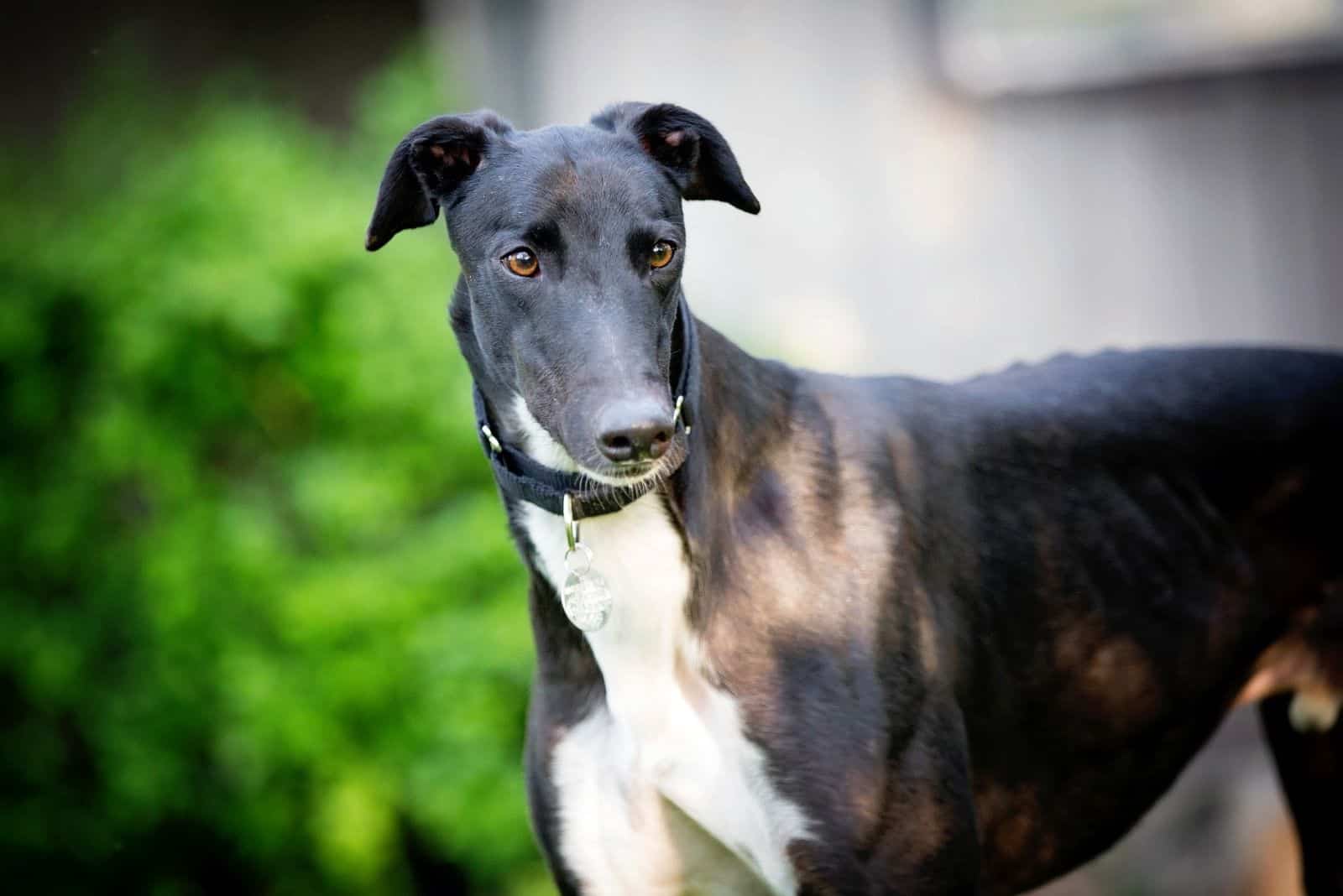
Greyhounds have a pretty unique appearance.
This is a dog breed that is registered and recognized by the American Kennel Club, meaning they have a breed standard.
We can distinguish two types of Greyhounds: racing and show.
Racing Greyhounds have a muscular body, but they weigh less. These pups can grow up from 25 to 29 inches at the withers.
Show Greyhounds are slightly bigger, and they stand tall at 26 to 30 inches at the withers.
When it comes to their weight, Greyhounds of both types weigh the same. The only difference is between male and female counterparts. Male Greyhounds weigh 65 to 85 pounds, while females weigh 50 to 65 pounds.
A Greyhound’s coat comes in one layer. It’s short, silky smooth, and lovely to the touch. A Greyhound’s coat color can come in various shades of gray, black, blue, fawn, red, white, brindle, etc.
It would be a shame to let this shiny coat get attacked by fleas or other parasites. Make sure you or your groomer take good care of your Greyhound’s skin and hair. Their skin is the biggest organ, and it’s prone to so many health issues that may lead to severe conditions.
How Much Do Greyhounds Shed?
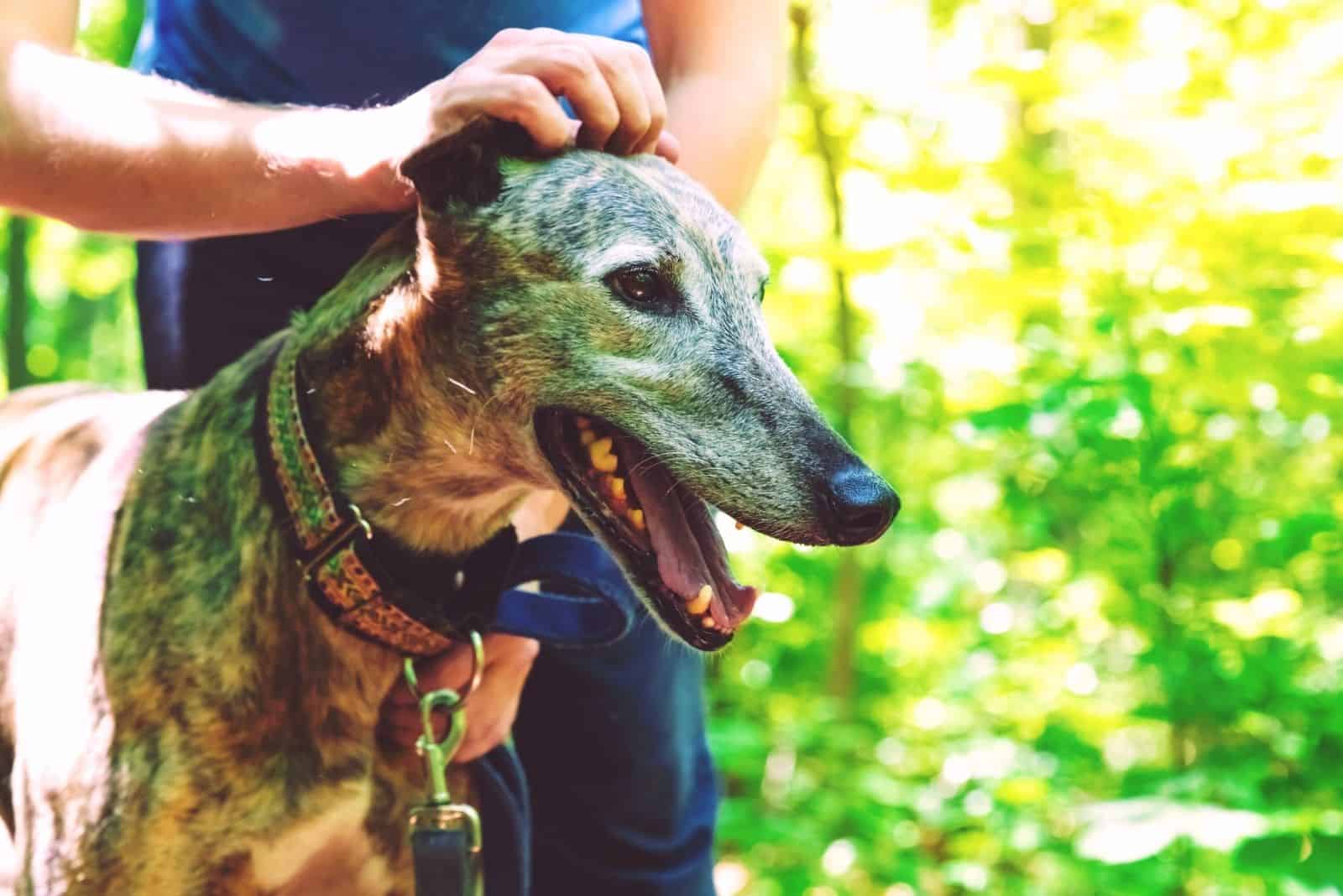
I know you’re dying to have this burning question answered!
Every future Greyhound owner should ask this very same question: How much do Greyhounds shed?
The answer may surprise you. Since Greyhounds fashion a short coat, many people believe these dogs don’t shed at all.
Wrong.
Greyhounds do shed, but it’s not that excessive. You can say they’re moderate shedders. For example, a Greyhound will shed more than a Whippet and less than a Labrador Retriever.
Greyhounds carry a single, short coat with loose hair on a minimal level. So, you will find occasional dead hairs around the house. There are ways to control this shedding, but don’t be surprised with silky dog hair on your new pair of jeans.
Greyhounds need daily brushing using the best brush for Greyhounds. We’ll get to this later. But, there comes that time of the year, in spring and fall, when Greyhounds and all other dogs shed more.
What you should know is that shedding is completely okay. It’s just a way of getting rid of old hair to make room for more. You shouldn’t bother stopping it as it’s impossible. However, you should bother to find the best grooming treatment for your Greyhound.
What Are The Reasons Behind Excessive Shedding?
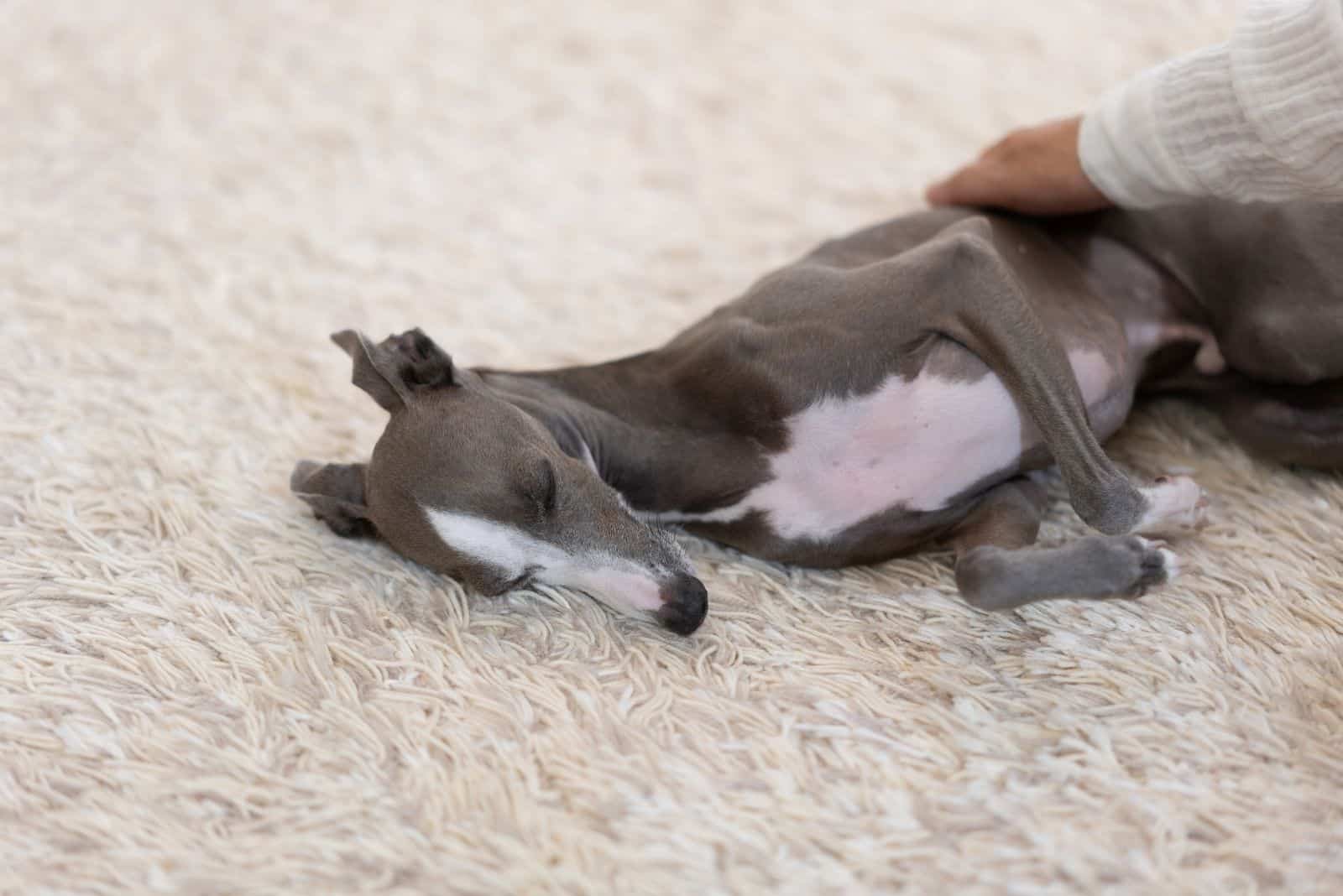
It’s not only a matter of do Greyhounds shed, but how much they shed.
As I previously stated, shedding is absolutely normal. It would bother me if a Greyhound doesn’t shed. I’d be all like: What’s wrong with that dog?
But, there is shedding and there is excessive shedding. The line between these two isn’t fine at all, and you won’t be able to tell the difference. Well, unless you’re a cleaning freak like I am, which makes this a bit harder.
Back to the point! Excessive shedding isn’t only during spring and fall. Seasonal shedding is also considered normal. Excessive shedding is what happens outside these months, causing dog owners to worry.
You will notice signs of excessive shedding once your dog starts behaving differently, or losing hair in patches all of a sudden.
One of the biggest reasons behind excessive hair loss is genetics. You can’t do much about it if a dog is prone to some skin conditions that might cause hair loss.
What you can do is pick a reliable breeder… someone who tests their parent dogs and puppies. Avoid buying a puppy with a questionable health status.
Diet is another cause as to why a dog loses hair. Usually, if a dog owner buys generic dog food, it may cause skin and coat issues. Such kibble doesn’t have the much-needed nutrients. The lack of vitamins, minerals, and good fats will cause hair loss.
How DO You Prevent Excessive Shedding?
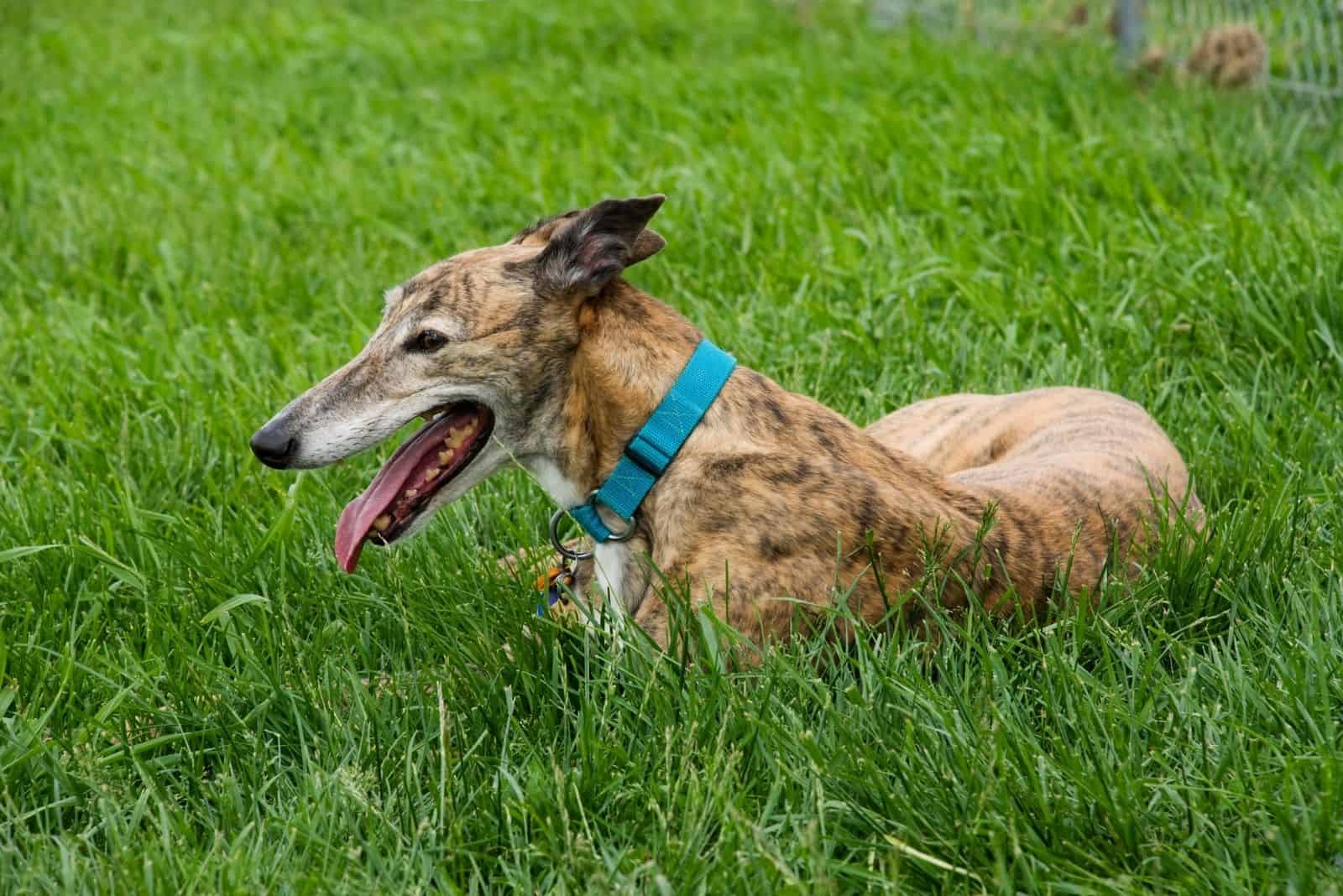
Many of the reasons I’m about to mention behind shedding are controlled by humans. You can completely control the conditions under which your dog loses too much hair, stop it, and ensure the coat is fresh-looking and shiny.
Temperature is a huge reason behind shedding. We can’t control the weather conditions outside, but we can keep our dogs inside when the thermometer goes way up or down. Don’t keep your dog outside for too long under harsh conditions in order to prevent such situations.
The temperature inside should be moderated, too. No dog likes it when it’s too hot or cold. Also, constant temperature swings shouldn’t be a thing, as they can also affect the coat’s condition.
Dogs are creatures that like to have a routine. No one likes to have its peace messed up all the time. Changes in our lives can result in stress, which also leads to problems with a dog’s coat.
Dogs feel everything, especially if they’re super attached to you. They will sense if something is wrong, and if the stress level is too high, it will manifest on a dog’s coat.
When picking dog food, opt for small brands that have listed ingredients on the back. The more natural ingredients the food has, the better. Not only will it taste better, but it will work wonders for your dog.
Keep an eye on these factors. You never know when too much or too little of something will tip the scale and leave your dog shedding like crazy.
I recommend you set a regular grooming schedule so you can keep an eye on all the changes that might happen with your dog.
Are Greyhounds Considered Hypoallergenic Dogs?
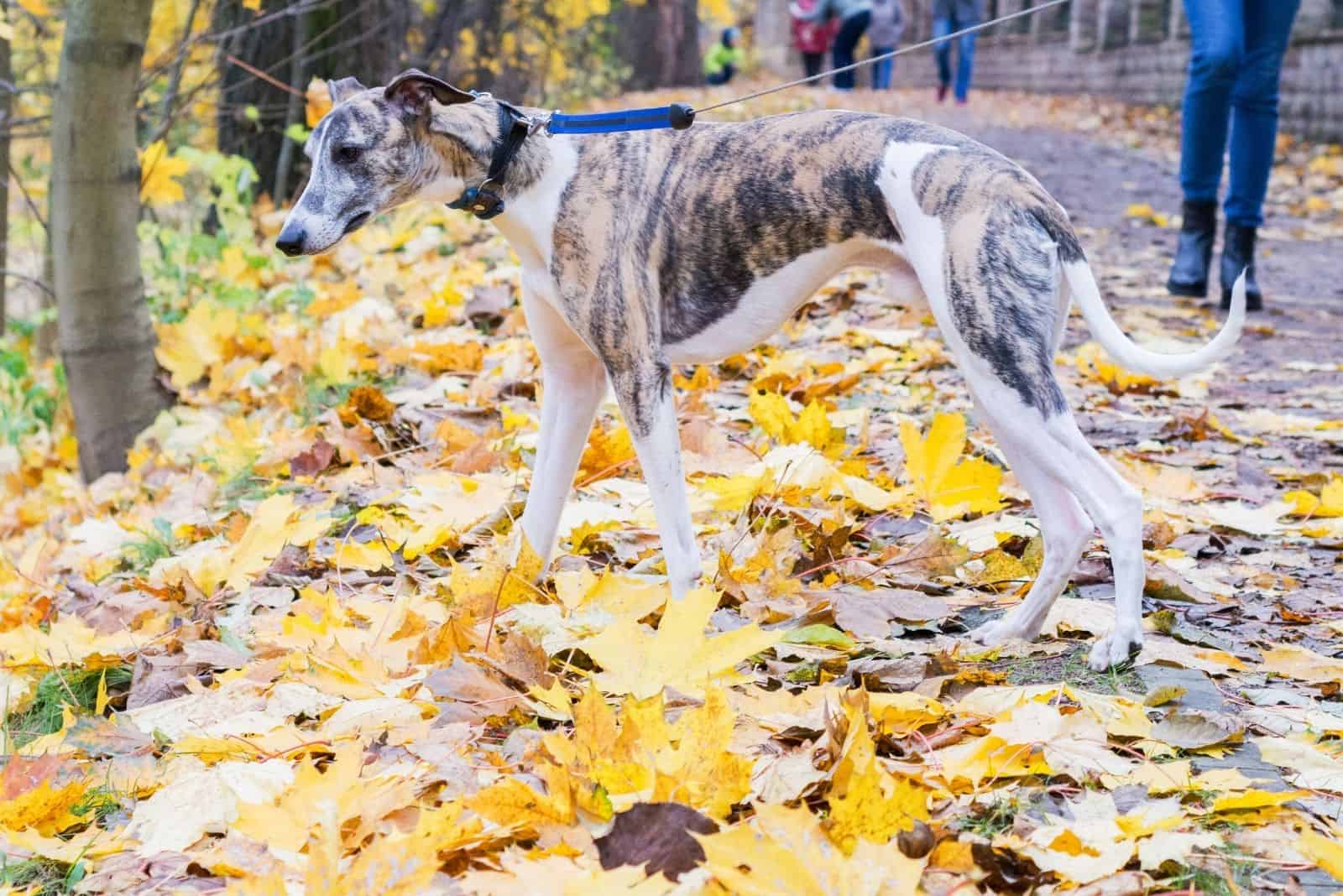
So, are Greyhounds hypoallergenic? Do Greyhounds shed only a little?
Despite what many people believe, Greyhounds aren’t hypoallergenic dogs.
I’m really sad if you thought they were, and you wanted to get one. Still, consider getting a Greyhound for their lovely temperament.
I’m afraid some of you aren’t aware of what hypoallergenic means. Let me clear things up.
You see, a dog doesn’t necessarily have to be single-coated to be categorized as hypoallergenic. We have many hypoallergenic dog breeds with double coats, like Poodles!
Human beings aren’t allergic to dog hair only. It’s the saliva and dander that are the allergens, and those trigger most allergies. Loose, dog hair catches saliva and dander and distributes it around the house, making one’s allergies worse.
So, you’re not allergic to the hair, but what’s clinging to it!
Greyhounds aren’t heavy shedders. They’re considered moderate. However, there is something that puts them on the end of the line, closer to hypoallergenic dog breeds. It’s the chemical composition of their saliva or dander that’s much different than with other dogs.
This means that their dead hair won’t be such a big deal for allergic people. If there is an air purifier, life with Greyhounds would be much easier.
How Do You Groom Greyhounds? Here Are My Tips And Tricks!
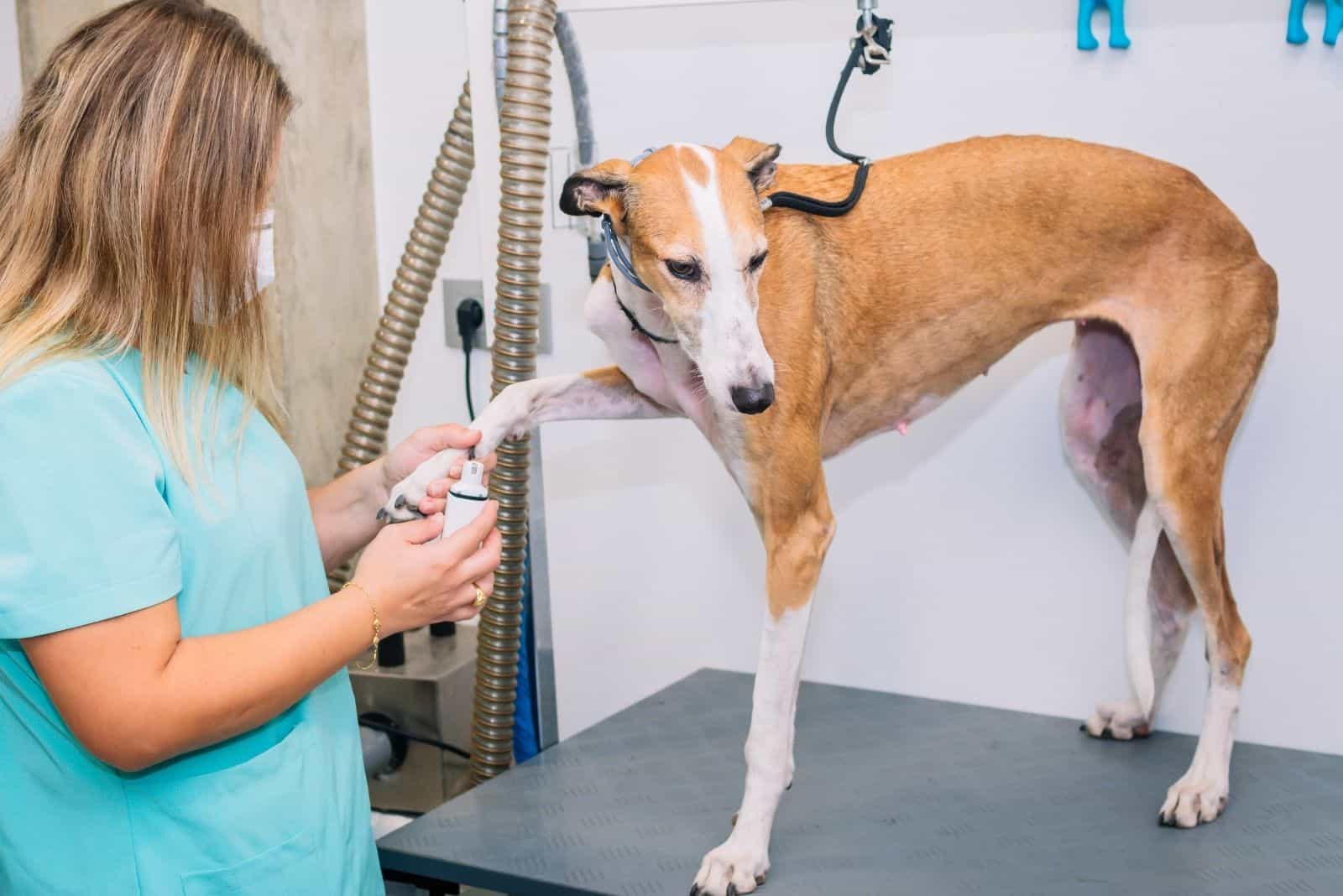
I wouldn’t say grooming a Greyhound is a delight, but it isn’t dull either.
These dogs are simply okay in terms of grooming. There is no such thing as a zero-maintenance dog breed. But, if I had to choose between grooming a Greyhound and a Poodle, I’d always choose a Greyhound.
Greyhounds, with their single, short coats need light brushing a couple of times a week. If you can commit to daily brushing, that would be just great. It will give you an opportunity to bond with your dog.
If not, make sure you don’t skip your weekly brushing sessions.
Greyhounds still shed moderately, but regular brushing should control the amount of hair. Make sure you don’t use a harsh brush. For example, a pin brush shouldn’t be used on a Greyhound as it’s too harsh and might cause skin injuries.
More on best Greyhound brushes soon!
Besides brushing, dogs need other grooming routines such as bathing, nail clipping, teeth cleaning, ear cleaning, etc.
I’m happy to say that Greyhounds don’t have that usual bad dog smell like some dog breeds. They’re not little stinkers, and they seem to enjoy baths when it’s time to get one. But, bathing shouldn’t be done too often.
Once every two to three months should be fine to bathe your dog. Of course, you can do it outside this schedule if your Greyhound gets dirty.
Overbathing will cause skin problems, rashes, dry patches, and itchiness, which is a huge problem with single-coated dogs.
When bathing, use a mild shampoo without any harsh chemicals. And, never… really, never reach out for human shampoo! Greyhounds have sensitive skin and it should be treated with care.
I know that when I mention teeth brushing, a lot of new dog owners think I’m crazy. But, seriously, teeth brushing is a thing with dogs. It prevents tartar buildup, infections, and gum problems.
If you go online and check out pet shops, there are a lot of good dog toothbrushes and dog toothpaste that can be used on your pup. You will need to start brushing early in puppyhood to get your dog used to it.
Greyhounds are very prone to dental problems, so you know how important daily brushing is for these doggos.
Don’t think of grooming as something you have to do. Think of it as a way of getting your dog healthy. Grooming sessions are a great opportunity for both of you to spend some quality time together.
Which Brush Should I Use For My Greyhound?
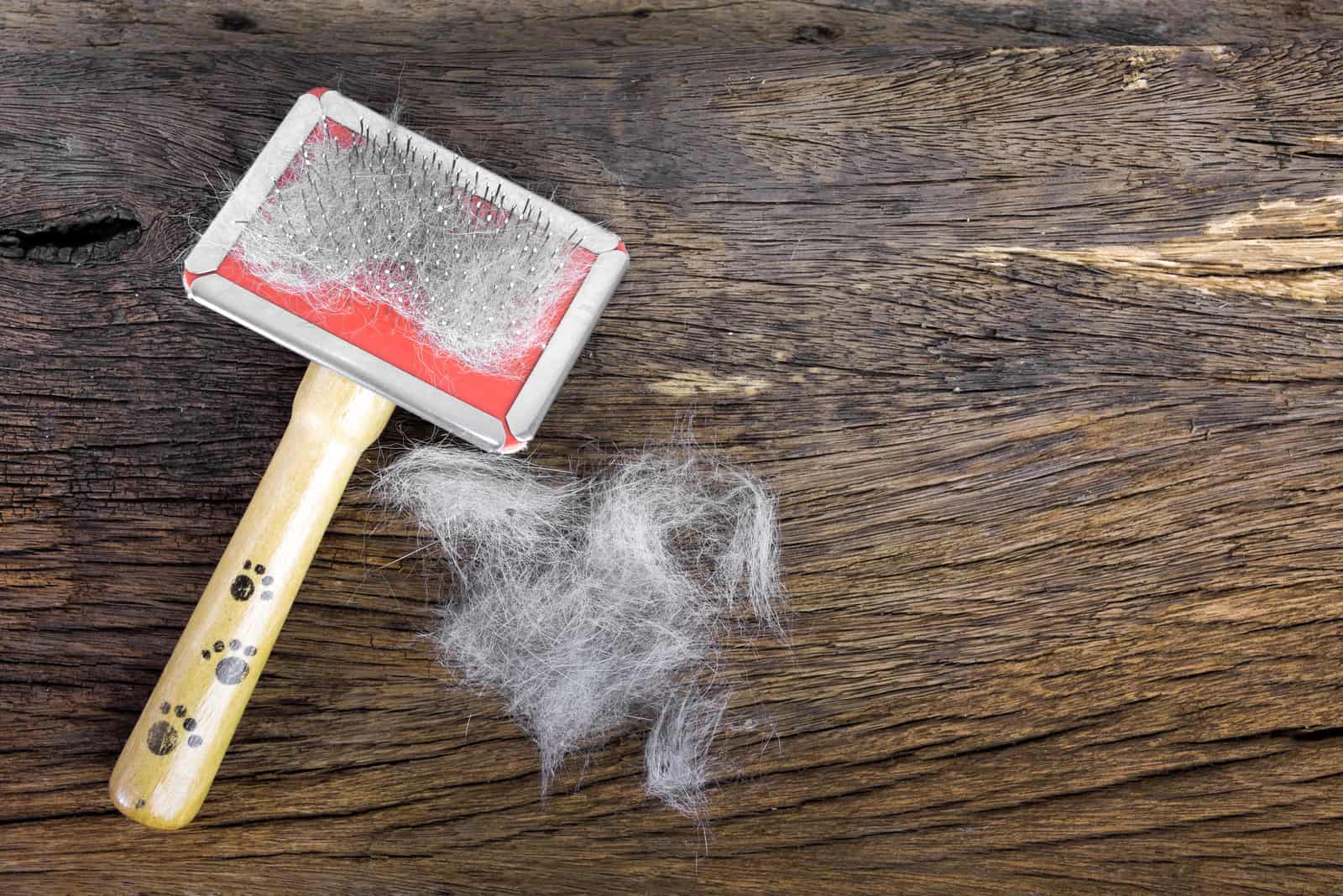
I’ve promised you’ll get to see which grooming brushes are the best for Greyhounds. Picking the best brush for your dog is more important than you think.
I’ve already crossed pin brushes off the list of good Greyhound brushes. They’re simply too dangerous for this dog breed.
But, soft bristle brushes and dog gloves are a completely different story.
Bristle brushes are there to promote and restore shine in a dog’s coat. Greyhounds don’t really get their coats too messy. If there are any tangles, they can be solved with your hands or by using this brush.
Bristle brushes not only scratch your dog where it’s itchy, but they also distribute natural coat oils throughout their coat. This brings out the shine in one’s coat and leaves it looking spectacular.
On the other hand, hound brushing gloves are an innovation I absolutely love! These little tools can be used both wet and dry. When wet, gloves help to shampoo the dog and massage it during a bath.
Dry use helps to catch dead hair like a magnet. You simply pat down your dog and the hairs will cling onto the glove.
What’s great about grooming gloves is that they’re super affordable and very durable.
Now that you know which brushes Greyhounds need, don’t reach out for undercoat rakes, wire pin brushes, or harsh slickers.
What Do Greyhounds Suffer From Health-Wise?
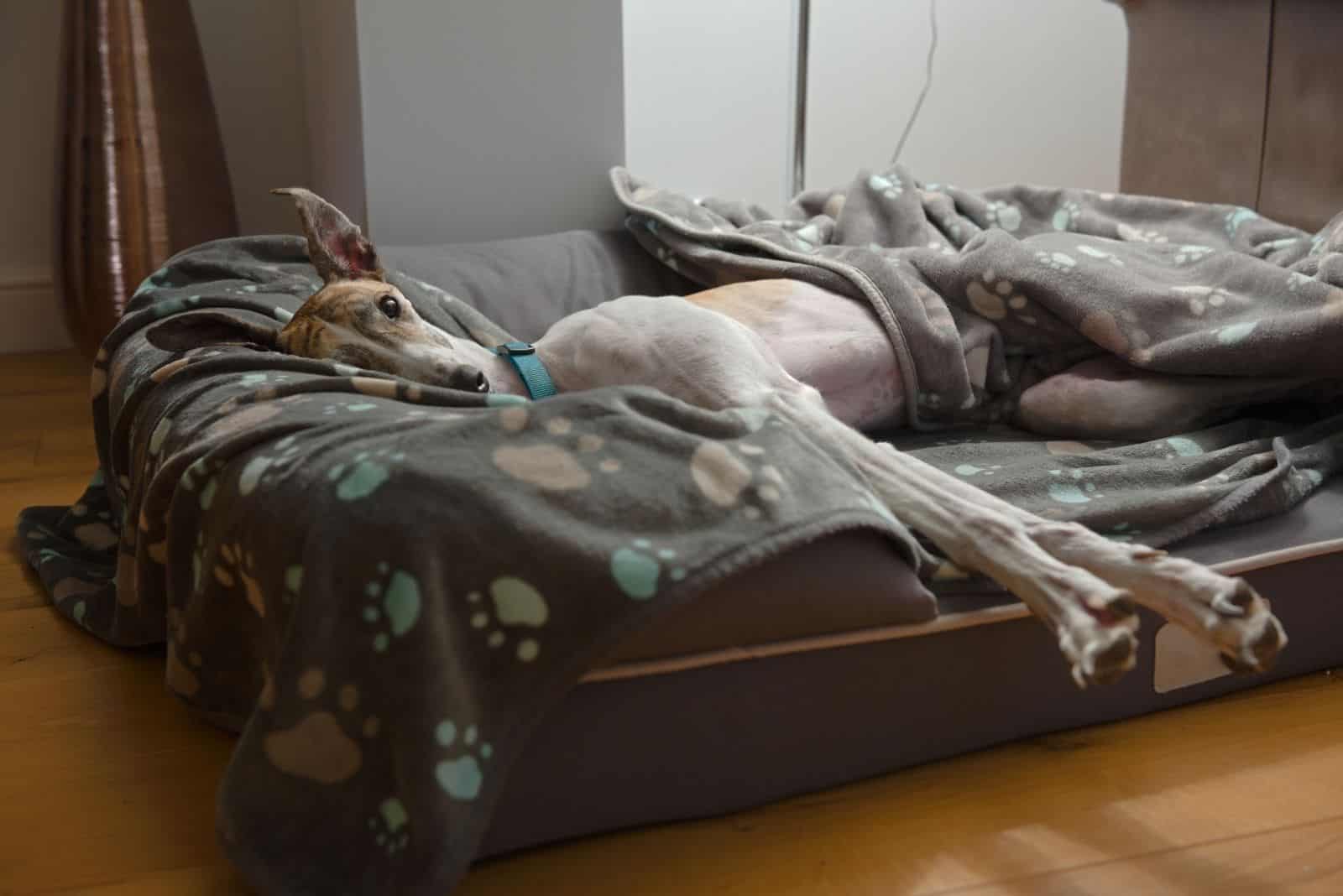
The biggest problem might not be “do Greyhounds shed”, but “how healthy are they”! Like many other dog breeds, Greyhounds can be prone to some severe health conditions that require treatment in time. If some conditions are not treated, you’re risking losing your dog before its lifespan runs out.
Most retired racing Greyhounds suffer from bone and joint problems. They also have issues with mobility. This is all thanks to their racing careers. Sadly, such problems may lead to a condition called osteosarcoma.
Osteosarcoma is an aggressive bone cancer that has to be treated the same way – aggressively. This means that if a dog is diagnosed with osteosarcoma, it will need a limb amputation or chemotherapy.
Dogs that are treated for osteosarcoma can only live up to two years after the surgery.
Another problem that Greyhounds are prone to is hypothyroidism. This is a condition when a dog’s thyroid gland doesn’t produce the proper amount of hormones. The first signs of problems are weight issues, brittle and coarse hair, and mood swings.
Greyhounds are also very sensitive to anesthesia. What’s normal for other dog breeds might not be normal for Greyhounds. This is all because they have a low body fat amount and can’t take anesthesia very well.
I’m really sad that some of these health conditions affect a Greyhound’s life significantly.
Make sure your doggy comes from a reliable source and it’s treated and tested for various health conditions.
But, if you’re adopting a retired Greyhound, make sure the vet is up to date with all the changes happening with your dog.
FAQS
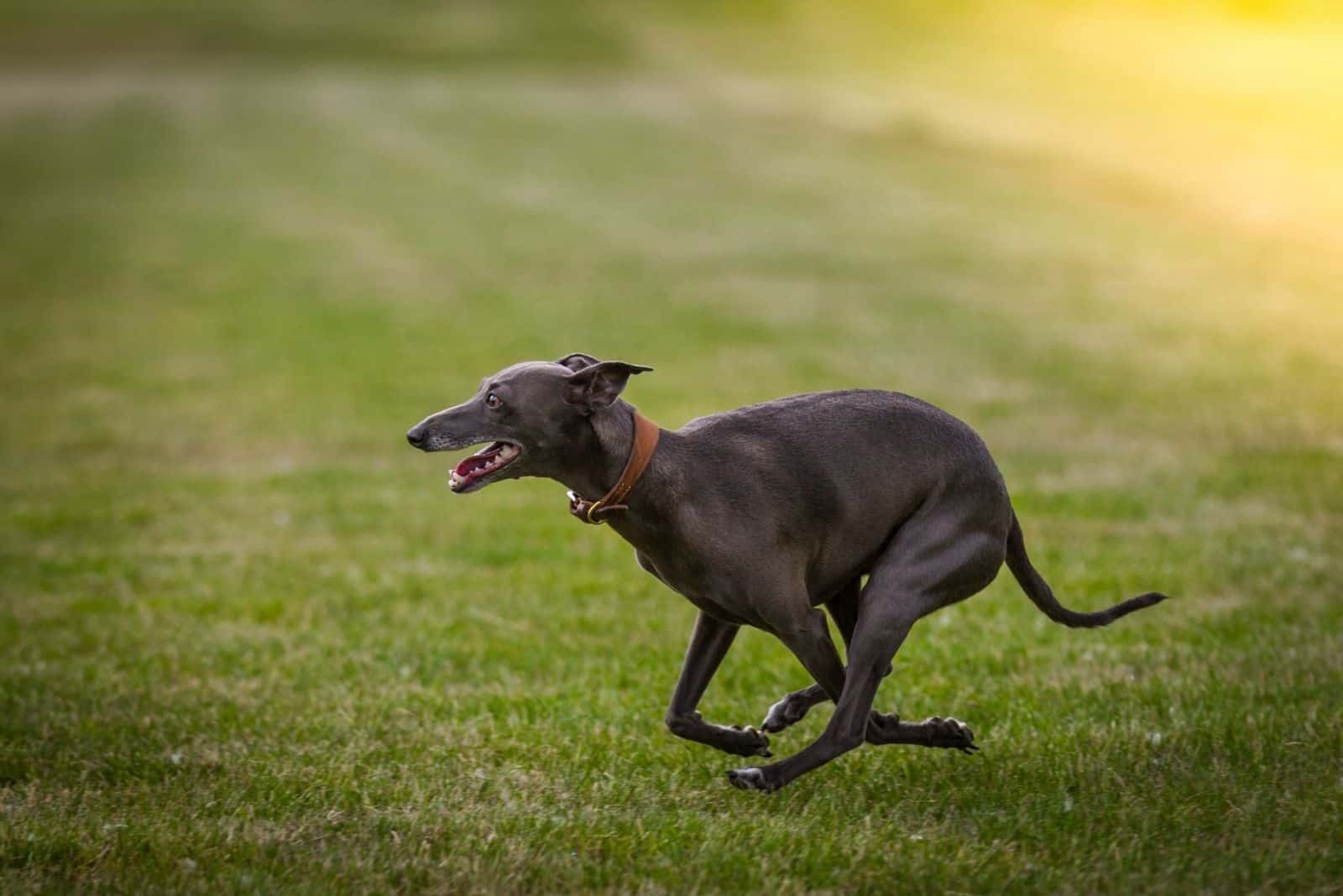
Why Should You Own A Greyhound?
Unlike many dog breeds, Greyhounds are very quiet, which makes them ideal for apartment living. They won’t bark or howl in the middle of the night and wake up your neighbors.
Greyhounds are sweet-tempered, affectionate, and kind. They will get along with everyone, including other animals. However, they must be trained and socialized in order to behave friendly.
I recommend getting a Greyhound if you’re too busy because they don’t require an extensive workout.
All in all, if you’re looking for a calm, kind dog that will be your close buddy, go with a Greyhound!
Why Shouldn’t You Own A Greyhound?
Do Greyhounds shed so much that you can’t take care of them? Well, no, that’s not the reason for skipping a Greyhound as your future pet.
The one thing you must be careful with around Greyhounds is their feelings.
Greyhounds are very sensitive, and their emotions can get very intense. For example, if you refuse to give food off your plate, your Greyhound might walk away and feel disappointed with you.
Well, you can definitely break their little hearts easily.
Greyhounds are huge drama queens. If you’re not ready for their melodrama, you shouldn’t get one.
However, if you take care of their feelings and don’t act harsh around your dog, living with a Greyhound can be quite delightful.
Final Words: Do Greyhounds Shed?
So, now we can answer the burning question: Do Greyhounds shed?
Yes, they are shedders, but they aren’t massive shedders!
There are so many other dog breeds that shed more than Greyhounds. I wouldn’t be worried at all about their loose dog hair… all dogs shed.
It’s a natural process. This makes sure that the coat stays bright and shiny.
Imagine how a Greyhound would look if he doesn’t shed: He’d be all messy and frizzy-looking.
All in all, Greyhound shedding isn’t considered a huge issue. But, if you’re allergic to dog hair, dander, or saliva, I recommend you pick another breed and admire Greyhounds from a distance.
Read Next: It Is Not Over Until The Fat Greyhound Runs
